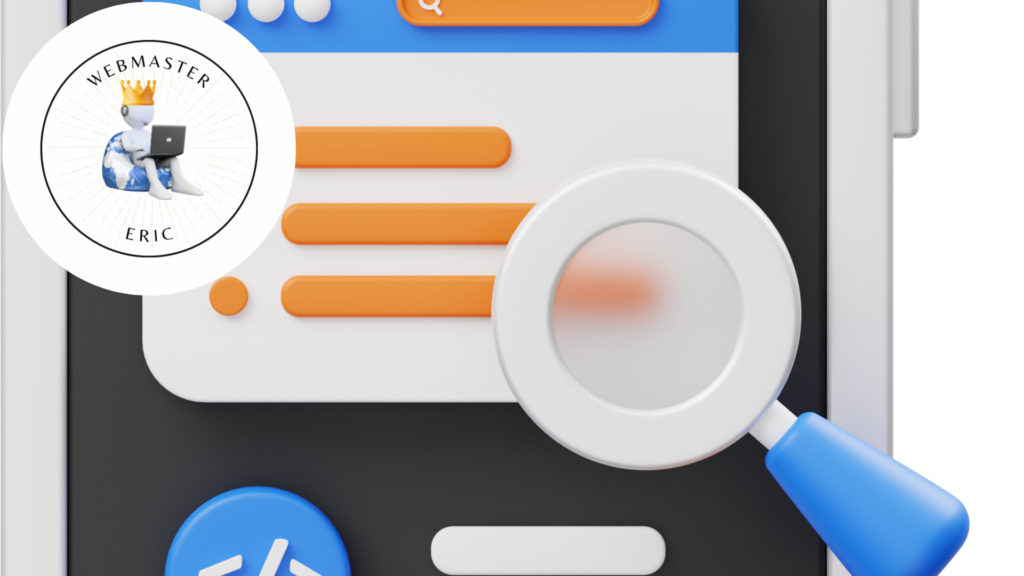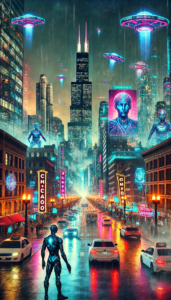
Online Website Design: Bridging Creativity and Functionality
Online website design is the art of creating visually appealing and functional websites. In today’s digital landscape, a well-designed website is crucial for businesses and individuals. It serves as a digital storefront, a communication platform, and a tool for engagement. However, designing a website can be challenging, especially for those without technical skills. This article explores online website design through a conversation between Webmaster Eric and a potential customer, highlighting the benefits and considerations of creating a website.
Scene 1: The Initial Inquiry
Potential Customer: “Eric, I’m interested in designing a website. Can you explain what online website design involves?”
Webmaster Eric: “Certainly! Online website design involves creating a website’s layout, appearance, and user experience.”
Online website design is a blend of creativity and technical skills. It focuses on crafting a website that is both visually appealing and easy to navigate. Designers use various tools and platforms to create websites that meet the specific needs of their clients. The goal is to create a seamless user experience that keeps visitors engaged and encourages them to explore further.
Scene 2: Understanding the Basics
Potential Customer: “What are the basic elements of online website design?”
Webmaster Eric: “The basics include layout, color scheme, typography, images, and navigation. These elements work together to create a cohesive design.”
The layout is the foundation of any website design. It determines how content is organized and presented to users. A well-structured layout ensures that information is easy to find and digest. The color scheme and typography set the tone and style of the website, reflecting the brand’s identity. Images and graphics enhance visual appeal, while intuitive navigation ensures a smooth user experience.
Scene 3: Choosing the Right Tools
Potential Customer: “What tools do designers use for online website design?”
Webmaster Eric: “Designers use tools like Adobe XD, Sketch, and Figma. These tools help create and prototype website designs.”
Design tools are essential for creating and visualizing website designs. Adobe XD, Sketch, and Figma are popular choices among designers. These tools offer features like vector design, prototyping, and collaboration, making it easier to create and refine website designs. They allow designers to experiment with different layouts and styles before finalizing the design.
Scene 4: The Role of Templates
Potential Customer: “Can templates be used in online website design?”
Webmaster Eric: “Yes, templates are a great starting point. They provide a basic structure that can be customized to fit your needs.”
Templates are pre-designed website layouts that can be customized to suit specific requirements. They offer a quick and cost-effective way to create a website, especially for those with limited design experience. Templates can be modified to include unique branding elements, ensuring that the final design aligns with the client’s vision.
Scene 5: Mobile Responsiveness
Potential Customer: “Is mobile responsiveness important in online website design?”
Webmaster Eric: “Absolutely! Mobile responsiveness ensures your website looks great on all devices, from desktops to smartphones.”
With the increasing use of mobile devices, having a mobile-responsive website is essential. Mobile responsiveness ensures that a website automatically adjusts to different screen sizes, providing a consistent user experience. This is crucial for user satisfaction and can significantly impact a website’s search engine rankings.
Scene 6: SEO Considerations
Potential Customer: “How does online website design impact SEO?”
Webmaster Eric: “Design affects SEO through site speed, mobile-friendliness, and user experience. A well-designed site can improve search rankings.”
Search engine optimization (SEO) is an important consideration in online website design. A well-designed website can enhance SEO by improving site speed, ensuring mobile-friendliness, and providing a positive user experience. These factors contribute to higher search engine rankings, making it easier for potential customers to find the website.
Scene 7: The Importance of User Experience
Potential Customer: “Why is user experience important in online website design?”
Webmaster Eric: “User experience determines how visitors interact with your site. A positive experience keeps them engaged and encourages return visits.”
User experience (UX) is a critical aspect of online website design. It focuses on creating a website that is easy to use and meets the needs of its users. A positive UX ensures that visitors can easily find information, complete tasks, and enjoy their time on the site. This can lead to increased engagement, higher conversion rates, and improved customer satisfaction.
Scene 8: The Value of Professional Design
Potential Customer: “Should I hire a professional designer, or can I design my website myself?”
Webmaster Eric: “It depends on your needs. DIY is possible with templates, but professionals offer expertise and custom solutions.”
While it’s possible to design a website using templates and DIY tools, hiring a professional designer can offer significant advantages. Professional designers bring expertise, creativity, and technical skills to the table. They can create custom solutions tailored to specific needs, ensuring a unique and high-quality design. For complex projects or those requiring a distinct brand identity, professional design services are invaluable.
Scene 9: Final Thoughts
Potential Customer: “Thanks, Eric. I feel more informed about online website design and ready to start my project.”
Webmaster Eric: “You’re welcome! Remember, a well-designed website is a powerful tool. Invest time and effort to make it great.”
Concusion
The text discusses the importance of online website design, emphasizing the balance between creativity and functionality. It features a conversation between Webmaster Eric and a potential customer, covering key aspects of website design.
- Definition: Online website design involves creating visually appealing and user-friendly websites, serving as digital storefronts and communication platforms.
- Basic Elements: Key components include layout, color scheme, typography, images, and navigation, all contributing to a cohesive design.
- Design Tools: Popular tools like Adobe XD, Sketch, and Figma are used for creating and prototyping designs.
- Templates: Templates provide a customizable starting point for those with limited design experience.
- Mobile Responsiveness: Ensuring websites look good on all devices is crucial for user satisfaction and search engine rankings.
- SEO Impact: Good design enhances SEO through improved site speed, mobile-friendliness, and user experience.
- User Experience: A positive UX keeps visitors engaged and encourages return visits.
- Professional Design: While DIY options exist, hiring a professional can provide expertise and tailored solutions for complex projects.
The conversation concludes with the customer feeling more informed and ready to start their website project, highlighting the value of investing in good design.



